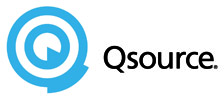Improving Patient Education to Prevent Adverse Drug Events
Anticoagulant medications such as warfarin and heparin are among the most common medications that cause complications for people in the hospital, according to the American Journal of Medicine. But maximizing communications across the care continuum and engaging patients and family members can prevent these life-threatening events.
Qsource quality improvement advisors helped the Wabash Valley Care Coalition in Indiana to reduce adverse drug events (ADEs) related to anticoagulants. The Coalition’s medication safety workgroup increased the number of patients educated on these medications in skilled nursing facilities and home health care by 49 percent in less than a year.
The workgroup conducted an audit and found only 40 percent of patients on anticoagulants were receiving education when they were discharged from the hospital. To address the problem, the group set out to conduct their own education in skilled nursing facilities and home health agencies. They aimed to increase the number of patients being educated and prevent hospital readmissions due to complications from anticoagulants.
Finding the Right Tools
“We used the evidence-based best practices of follow up calls and patient-specific education and engagement,” said quality improvement advisor Ann Hayworth.
 To reach their goals, the group identified the specific tools needed for their education initiative. They chose a blood thinner zone tool, a communication audit for discharges, and communication process flows for each provider type.
To reach their goals, the group identified the specific tools needed for their education initiative. They chose a blood thinner zone tool, a communication audit for discharges, and communication process flows for each provider type.
“We worked with transitional care pharmacists and redesigned an existing blood thinner zone tool specific to transfers from nursing facilities and for home health patients,” said Hayworth. “Our version focused on self-management, which was the ultimate goal. The tool helps patients sustain and continue to avoid unnecessary hospitalization.”
The zone tool was used to educate patients taking anticoagulant medications and alert them when they need to contact their doctor to prevent an ADE. The tool also assisted healthcare providers in coordinating follow up blood work, physician appointments and home health transfers.
Taking Action
Collaborating with the Coalition members, the workgroup connected with local skilled nursing facilities and home health agencies’ staff. They agreed to identify patients on anticoagulants when they were admitted.
Qsource quality improvement advisors assisted in developing workflow plans for skilled nursing facilities. The workflow provided a guide for the discharge planner to ensure that all involved in the patient’s medication management were included in this process. It ensured patients and families understood the risk of taking a blood thinner medication and included other levels of care in the coordination for optimal patient safety.
If the patient was discharging home on an anticoagulant, the discharge planning process determined if follow up blood work was needed. If so, the patient was flagged for further services and follow-up care coordination. If not, a staff member gave the patient the zone tool before discharge with a detailed explanation.
In the home health setting, case managers were educated on the blood thinner zone tool and its purpose. They used the tool to help their patients learn to manage their international normalized ratio (INR) at home with their support.
Each facility participating in the initiative collected data on the number of tools distributed, the number of follow-up calls made after the patient returned home, and the number of hospitalizations related to anticoagulants. They submitted this information monthly to the Qsource advisors.
“It takes the coordination and communication of all levels of care when someone is on an anticoagulant. The prescribing physician, the skilled nursing facility at discharge, the anticoagulant clinic, and home health care. Without the coordination and communication of all of these entities, adverse drug events can occur,” said Amy Beck, Director of Nursing for Signature Healthcare of Terre Haute, Ind.
Getting Results
The initiative resulted in 90 percent of patients receiving a follow-up phone call and 89 percent received the zone tool with education. No patients were readmitted to the hospital due to complications from anticoagulants during the initiative.
“Coordinating safe care is difficult when providers do not communicate and plan in advance of a patient transitioning to self-care. By providing patient education and communication workflow expectations, the workgroup improved the safety and quality of transitions of care throughout the continuum,” said Hayworth.
For more information on Qsource and out work to prevent ADEs, visit our webpage on medication safety.
 Skip to main content
Skip to main content


